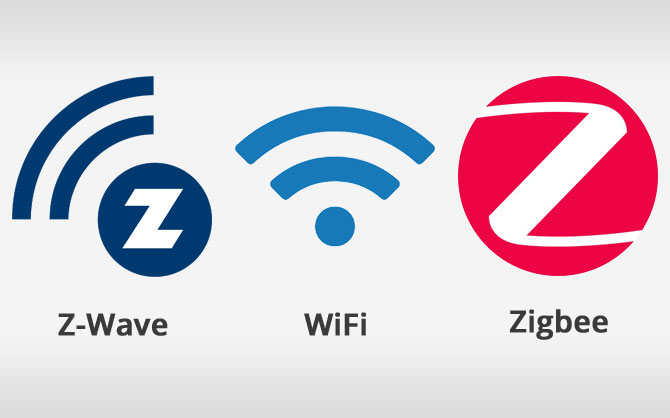This post may contain affiliate links, which means I may receive a commission from purchases made through these links. The reputation of Nexa is important; that’s why I will only recommend products I have personally reviewed or tested.
Delving into the Realm of Zigbee, Z-Wave, and Wi-Fi: A Guide to Smart Home Protocols
The realm of smart home technology is no longer a fantastical concept belonging to a distant future. It’s our reality today. Diverse communication protocols have emerged to facilitate interoperability among devices. Among these, Zigbee, Z-Wave, and Wi-Fi stand out. This comprehensive guide will shed light on the nuances of each protocol, expounding their advantages and drawbacks. We will journey through the realm of these smart home protocols, ascertaining how they interplay, and evaluate how they can revolutionize your home into a hub of seamless automation.
Deciphering Zigbee: Understanding its Functionality
Picture Zigbee as a busy mail carrier, shuttling packets of data across a sprawling network of devices. Drawing upon the IEEE 802.15.4 standard, Zigbee has firmly positioned itself in the realm of low-power, cost-effective, and low-data-rate networks. Its playground extends from home automation to industrial automation and beyond.
So how does Zigbee weave its web? Its architecture resembles a mesh network where each device forms a knot, interlinked with one or more devices. By bypassing the need for a central hub, data transmission is facilitated directly between devices, enhancing its efficiency. Each device is given a unique identifier to ensure proper communication, making Zigbee a robust technology for a plethora of low-power applications.
Zigbee, Z-Wave, and Wi-Fi in the Spotlight: Contrasting Protocols
When it comes to automating your home, Zigbee, Z-Wave, and Wi-Fi are all prominent contenders. However, each offers unique features that could tip the scales in their favor depending on your requirements.
Zigbee – This robust protocol strikes the right balance between low-power consumption, reliability, security, and compatibility. Its most notable strength lies in its energy efficiency, ideal for battery-operated devices. Its reach extends far and wide, making it suitable for large spaces. Its Achilles heel, however, lies in its slower speed, rendering it less desirable for applications requiring high data rates.
Z-Wave – Mirroring Zigbee in many ways, Z-Wave is another reliable and secure option for home automation. Like Zigbee, Z-Wave is a champion of energy efficiency, making it well-suited for battery-operated devices. However, its slower speed makes it less viable for applications needing high data transfer rates.
Wi-Fi – Standing tall as the most popular home automation protocol, Wi-Fi boasts speed, reliability, and security. Its prowess lies in its high data transfer rate, fitting perfectly for applications demanding high data rates. But all that glitters isn’t gold; Wi-Fi falls short on energy efficiency, posing a challenge for battery-operated devices.
So, which protocol should reign supreme in your smart home? That truly depends on your unique requirements. If a reliable and secure connection with a broad range is your goal, Zigbee or Z-Wave could be your ally. If speed and high data rates are your priority, Wi-Fi is your knight in shining armor.

Navigating Through Smart Home Protocols: Making the Right Choice
Smart home technology offers a palette of protocols. Distinguishing between them can feel like threading a needle in a haystack. In this section, we compare the key players – Wi-Fi, Bluetooth, Z-Wave, and Zigbee – and guide you in selecting the one best suited to your requirements.
Wi-Fi takes the crown as the most prevalent smart home protocol. It’s user-friendly and compatible with most devices. However, it can sometimes stumble with slower, unreliable connections and isn’t as secure as some alternatives.
Bluetooth shines when connecting proximate devices, although its range is limited and speed can be slow.
Z-Wave, with its low-power consumption, excels at connecting distantly located devices and is more secure than Wi-Fi and Bluetooth. However, it’s not as commonly supported.
Similarly, Zigbee stands out for its low-power consumption and high security when connecting distantly located devices, although its adoption is not as widespread.
The selection of the right protocol should hinge on your specific needs and the devices you plan to integrate. Analyzing reviews and conducting comprehensive research can steer you towards an informed decision, ensuring that your smart home runs like a well-oiled machine.
Creating Your Smart Home with Zigbee, Z-Wave, and Wi-Fi
The exciting world of smart home technology is just a few steps away. The right setup can usher in a new era of efficiency, security, and comfort. Here, we delve into the three principal technologies for establishing a smart home: Zigbee, Z-Wave, and Wi-Fi.
Zigbee and Z-Wave create low-power, low-cost mesh networks, connecting an array of devices like lights, thermostats, and door locks. Wi-Fi, on the other hand, powers high-cost, high-power networks connecting computers, tablets, smartphones, and more to the internet. They are all compatible with popular smart home hubs like Amazon Echo and Google Home.
Once you’ve decided on the devices to integrate, proceed to purchase the necessary hardware and install it as per the manufacturer’s instructions. The next step is setting up your smart home hub, the nucleus of your smart home that enables control over all connected devices. Following this, connect your devices to the hub via a mobile app or web interface.
Voila! You have successfully set up your smart home with Zigbee, Z-Wave, and Wi-Fi. Welcome to an efficient, secure, and comfortable future!
Troub Whether you’re looking for a low-power, low-cost solution or a high-speed, reliable connection, there’s a smart home protocol out there for you.

